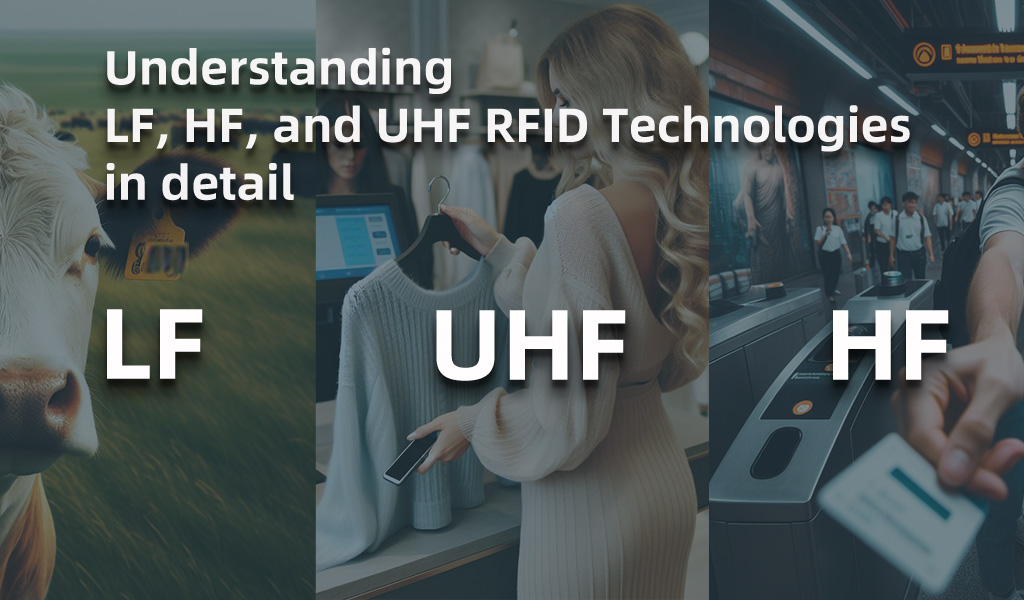Your location: Home Page > RFID Blog | SILION TECH > Understanding LF, HF, and UHF RFID Technologies in detail
News and Information
Understanding LF, HF, and UHF RFID Technologies in detail
Author:2024-01-12 14:47:11
In the world of radio-frequency identification (RFID), understanding the frequencies at play is crucial for unlocking the full potential of this technology. RFID systems operate in different frequency bands, with Low Frequency (LF), High Frequency (HF), and Ultra High Frequency (UHF) being the most common. In this blog, we'll delve into the basics of each frequency, shedding light on their applications, characteristics, and why they matter.

Low Frequency (LF) RFID: The Groundwork
Frequency Range: 30 kHz to 300 kHz
Low Frequency RFID operates within the frequency range of 30 kHz to 300 kHz, making it suitable for short-range applications. LF RFID systems are known for their ability to perform well in challenging environments, such as those with high metal or liquid content. The LF spectrum is commonly used in animal tracking, access control systems, and keyless entry systems.
One notable characteristic of LF RFID is its resistance to interference from surrounding materials, making it a reliable choice for applications where reliability is paramount. LF tags are typically less affected by the presence of water or metal, making them ideal for scenarios where these elements are prevalent.
High Frequency (HF) RFID: A Versatile Middle Ground
Frequency Range: 3 MHz to 30 MHz
High Frequency RFID operates within the frequency range of 3 MHz to 30 MHz, providing a middle ground between LF and UHF. HF RFID is widely used in various applications, including contactless smart cards, payment systems, and healthcare.
One of the key advantages of HF RFID is its ability to support faster data transfer rates and offer a longer read range compared to LF. This makes HF technology suitable for applications where a balance between range and data transfer speed is critical. Common HF RFID applications include public transportation cards, electronic passports, and library book tracking.
Ultra-High Frequency (UHF) RFID: The Long-Range Powerhouse
Frequency Range: 300 MHz to 3 GHz
Ultra High Frequency RFID operates within the frequency range of 300 MHz to 3 GHz, making it the powerhouse for long-range applications. UHF RFID is widely recognized for its extended read range and faster data transfer capabilities, making it a preferred choice for supply chain management, inventory tracking, and retail applications.
The increased frequency in UHF RFID allows for faster communication between the reader and tags, enabling rapid and efficient data exchange. The extended read range is particularly advantageous in scenarios where a large number of items need to be identified and tracked simultaneously. UHF RFID is commonly used in retail inventory management, logistics, and asset tracking, for more RFID solutions click here .
Choosing the Right Frequency for Your Needs
Selecting the appropriate RFID frequency for your application is a critical decision that hinges on various factors. Here are some key considerations:
Read Range Requirements: LF is suitable for short-range applications, while UHF excels in long-range scenarios. HF offers a middle ground, making it versatile for various use cases.
Environmental Conditions: LF is resilient in challenging environments with metal or liquid, while UHF may experience interference in such conditions. Consider the materials in your environment when choosing the RFID frequency.
Data Transfer Speed: If your application demands high-speed data transfer, HF or UHF may be preferable over LF.
Application-Specific Needs: Different frequencies have advantages in specific applications. LF is often chosen for animal tracking, HF for contactless smart cards, and UHF for inventory management.
Navigating RFID Frequencies with Confidence
In the dynamic landscape of RFID technology, understanding the nuances of LF, HF, and UHF frequencies is key to making informed decisions. Whether you're tracking livestock, managing inventory, or securing access to facilities, the right RFID frequency can significantly impact the success of your application.
By weighing the characteristics and advantages of each frequency, you can tailor your RFID solution to meet the unique demands of your specific use case. As technology continues to evolve, staying informed about RFID frequencies ensures that you harness the full potential of this transformative technology. Unlock the possibilities of LF, HF, and UHF RFID, and watch your applications thrive in the world of seamless connectivity.